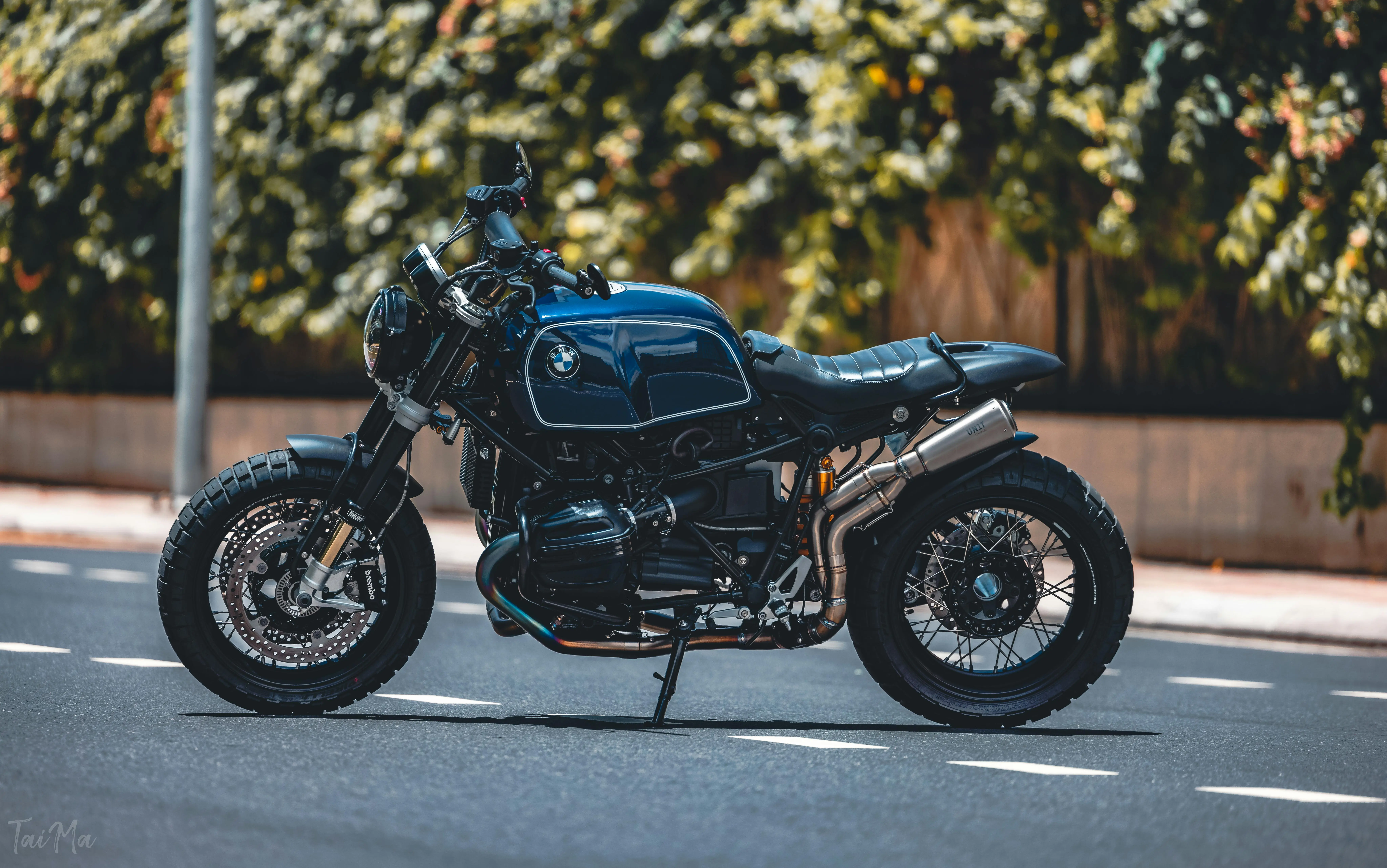French Customs Clearance For Motorcycles: 2025 Paperwork Guide
Clearing French customs is the most paperwork‑heavy stage of shipping a motorcycle from the USA to France—but with the right documents and expectations, it’s a predictable process. Whether you’re importing a single bike or multiple units, understanding how customs officers think about ownership, value, and conformity will help you avoid storage charges and delays at Le Havre.
For a full, multi‑topic walkthrough (methods, duties, and registration), read the main guide on shipping motorcycles to France from the USA, and use the France shipping page to see current routes and rates.
Documents You Need Ready Before Your Bike Reaches France
French customs clearance starts long before the container doors open. Having complete, consistent documentation upfront is the biggest factor in a smooth process.
Key documents typically required:
-
Original title
-
Must show you (or your company) as the legal owner.
-
Any lien must be cleared with a lien release letter.
-
VIN on the title must match the bike exactly.
-
-
Bill of sale or purchase invoice
-
Shows purchase price, date, seller/buyer details, and VIN.
-
Used by customs to determine the taxable value (and to cross‑check if the declared value looks realistic).
-
-
Bill of Lading (BOL)
-
Issued once your motorcycle is loaded.
-
In many retail and personal shipments, an Express Release BOL is used so cargo is released electronically.
-
Some European forwarders, banks, or customs‑bonded movements still insist on original paper BOLs for business‑to‑business or letter‑of‑credit transactions, so commercial importers should confirm BOL type with their partners before shipping.
-
-
Passport or company documents
-
A copy of your passport for private imports.
-
Company registration documents for dealer or business shipments.
-
-
Power of Attorney for export
-
Authorizes West Coast Shipping to file US export declarations on your behalf.
-
-
Conformity documents (for registration later)
-
Certificate of Conformity (COC), manufacturer tech sheets, or previous EU registration documents.
-
These are not strictly required by law just to clear customs, but in practice customs may ask questions or slow processing if documentation suggests the motorcycle may never be road‑legal in France—particularly for track‑only, salvage, or heavily modified bikes that lack conformity data.
-
The required‑docs lists for cars on both the France route page and in what you need to take your car to France apply almost one‑to‑one to motorcycles.
What Happens When Your Motorcycle Arrives in France?
Once the vessel reaches Le Havre and the container is unloaded, your motorcycle enters a clear sequence of customs steps.
1. Entry and Manifest Check
-
The shipping line submits manifests and entry data to French customs.
-
Customs links your bike (by VIN and BOL) to the import declaration your broker or agent files.
If the paperwork was prepared before arrival (best practice), this step happens quickly.
2. Customs Declaration Filing
The customs broker files an electronic declaration that includes:
-
Your identity or company details.
-
The motorcycle’s VIN, make, model, year, and value.
-
The shipping cost and freight details.
-
The tariff classification used to compute duty and VAT.
This declaration uses the same duty/VAT logic described in West Coast Shipping’s French tariffs guide: generally 10% duty and 20% VAT for modern vehicles, with special cases for classics and relocations.
3. Risk Assessment and Possible Inspection
French customs uses a “risk channel” system:
-
Many motorcycles clear on paperwork alone if documents and values look normal.
-
Some shipments are flagged for physical inspection; customs may:
-
Confirm the VIN matches documents.
-
Check that the bike genuinely matches the declared model and condition.
-
Look for undeclared items or modifications that change classification.
-
In edge cases, take a closer look when the motorcycle appears track‑only, salvage, or very heavily modified and there is no conformity documentation, because they are concerned it may never be road‑legal in France.
-
Legally, customs is focused on import compliance and taxes rather than registration. However, when the intended use is clearly road‑going and the file contains no conformity data at all, some officials have been known to query or temporarily hold such bikes while they verify that bringing them into free circulation does not conflict with French or EU vehicle regulations. It’s not a formal COC requirement at customs, but implied regulatory concerns can influence how quickly clearance moves on unusual or non‑registrable motorcycles.
4. Duty and VAT Assessment
Using the declaration, customs calculates:
-
Import duty (usually 10% for modern motorcycles).
-
VAT (generally 20%) on the total of bike value + shipping + duty.
If you’re importing a classic or relocating, your broker will apply the correct codes for reduced or zero rates, as outlined in the import duties & VAT for France car article and the motorcycle‑specific France cost guide.
5. Payment and Release
-
Duties, VAT, and port charges are paid (typically via your customs broker).
-
Customs issues a clearance confirmation / customs entry certificate.
-
The port releases your motorcycle for pickup or onward transport within France.
At this point, the bike is legally imported—but not yet registered for French roads.
Common Customs Problems (and How to Avoid Them)
Most clearance delays trace back to a handful of avoidable issues:
-
VIN mismatches
-
Even one wrong character between the title, BOL, and declaration can trigger manual checks.
-
Always double‑check VINs before booking.
-
-
Unclear ownership
-
Title in the previous owner’s name without a clean bill of sale to you.
-
Missing lien release when a finance company still appears on the title.
-
-
Undervaluation
-
Declaring a $18,000 bike as worth $5,000 invites immediate scrutiny.
-
Customs can use market data and dealer prices to re‑value the motorcycle and apply penalties.
-
-
Conformity concerns on non‑standard bikes
-
While a COC is not a strict legal requirement for customs clearance, track‑only, salvage, or radically modified motorcycles with no conformity data are more likely to be questioned.
-
In rare but documented cases, such bikes have been held or queried because customs suspected they might never satisfy French road‑use rules.
-
The documentation checklists in how to ship a car to France and the motorcycle‑specific France shipping guide exist largely to help you avoid these obstacles.
After Customs: From Clearance to French Registration
Customs clearance is not the end of the story—you still need to make the motorcycle legal to ride in France.
Typical post‑customs steps:
-
Move the bike from the port to your home, storage, or a workshop.
-
Gather registration documents:
-
Customs clearance certificate;
-
Title and proof of ownership;
-
Proof of identity and address;
-
COC or equivalent conformity evidence (manufacturer tech sheets, homologation documents, prior EU registration);
-
Technical inspection (Contrôle Technique) results if applicable for your motorcycle’s age and category.
-
-
Submit your registration application via the ANTS portal or through a local service provider.
These steps mirror the car process laid out in the ultimate guide to shipping cars to France with only minor tweaks for motorcycle categories and power ratings.
Best Practices for Stress‑Free French Customs Clearance
To stack the odds in your favor:
-
Prepare all documents before booking
-
Don’t wait until the bike is at sea to find out the title or invoice has an issue.
-
-
Be honest and realistic on declared value
-
Saving a little on duty isn’t worth risking a revaluation plus penalties.
-
-
Plan around your “intended use”
-
If the goal is French registration and regular road use, line up a COC or strong technical documentation ahead of time.
-
If the bike is track‑only or salvage, make sure that status is clear so customs understands why conformity data may not exist.
-
-
Confirm BOL requirements for business shipments
-
Private imports can usually rely on Express Release, but commercial importers working with banks or bonded arrangements should confirm if original BOLs are required.
-
-
Work with a shipper familiar with France
-
Using one experienced provider for export, ocean transport, and customs coordination reduces miscommunication between parties.
-
Get a Customs‑Ready Motorcycle Shipping Quote to France
The best way to see how customs will affect your total cost is to start with a real quote. Enter your origin, motorcycle details, and French destination into the calculator linked on the France page, then overlay the duty/VAT and customs patterns discussed here to get a full picture of your landed cost.
You May Also Like
These Related Stories

Import Duties & VAT For Motorcycles In France (2025 Explained)

Cost To Ship A Motorcycle From USA To France In 2025

-093789-edited.png?width=220&height=79&name=wcs_final_logo_(1)-093789-edited.png)
